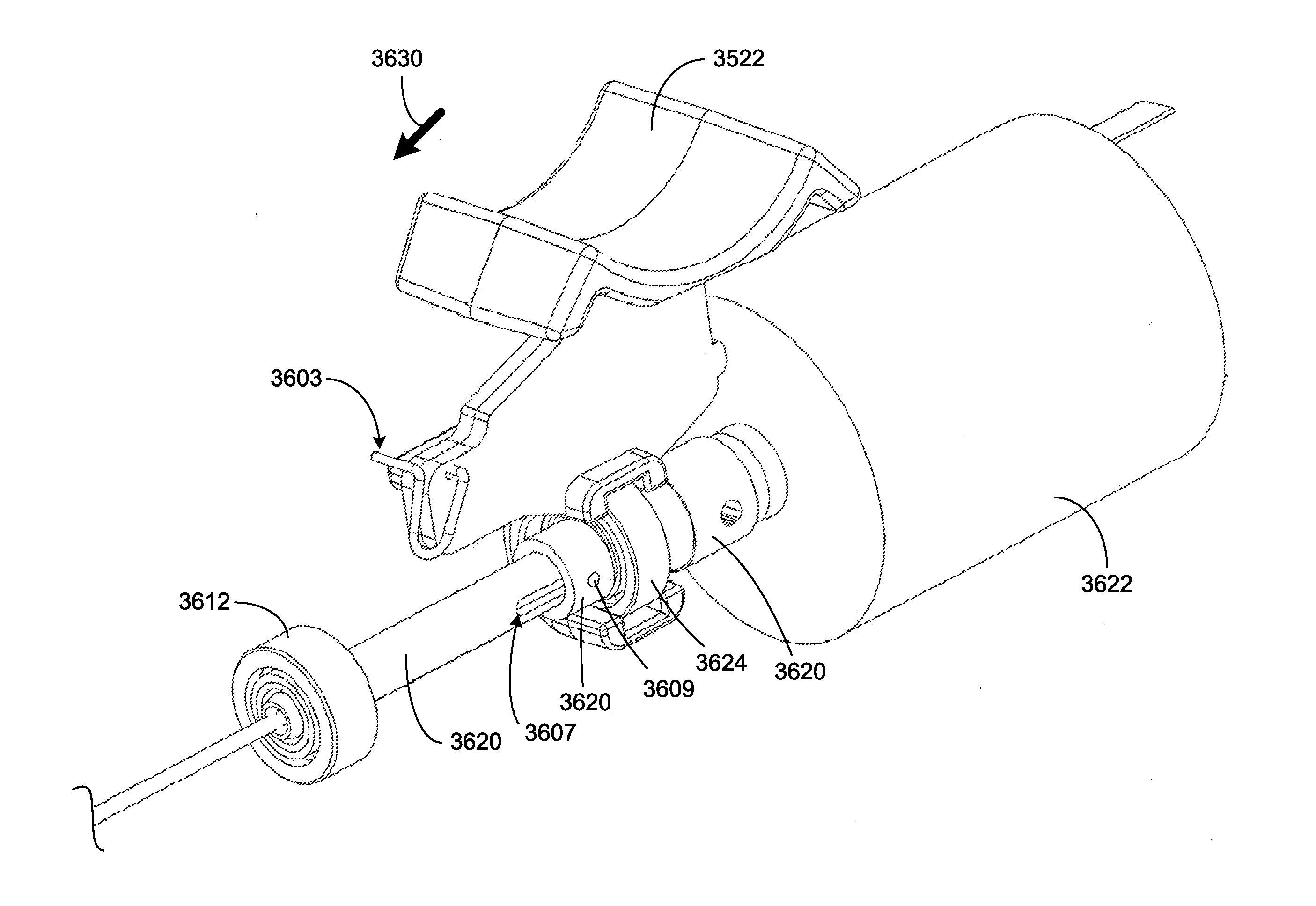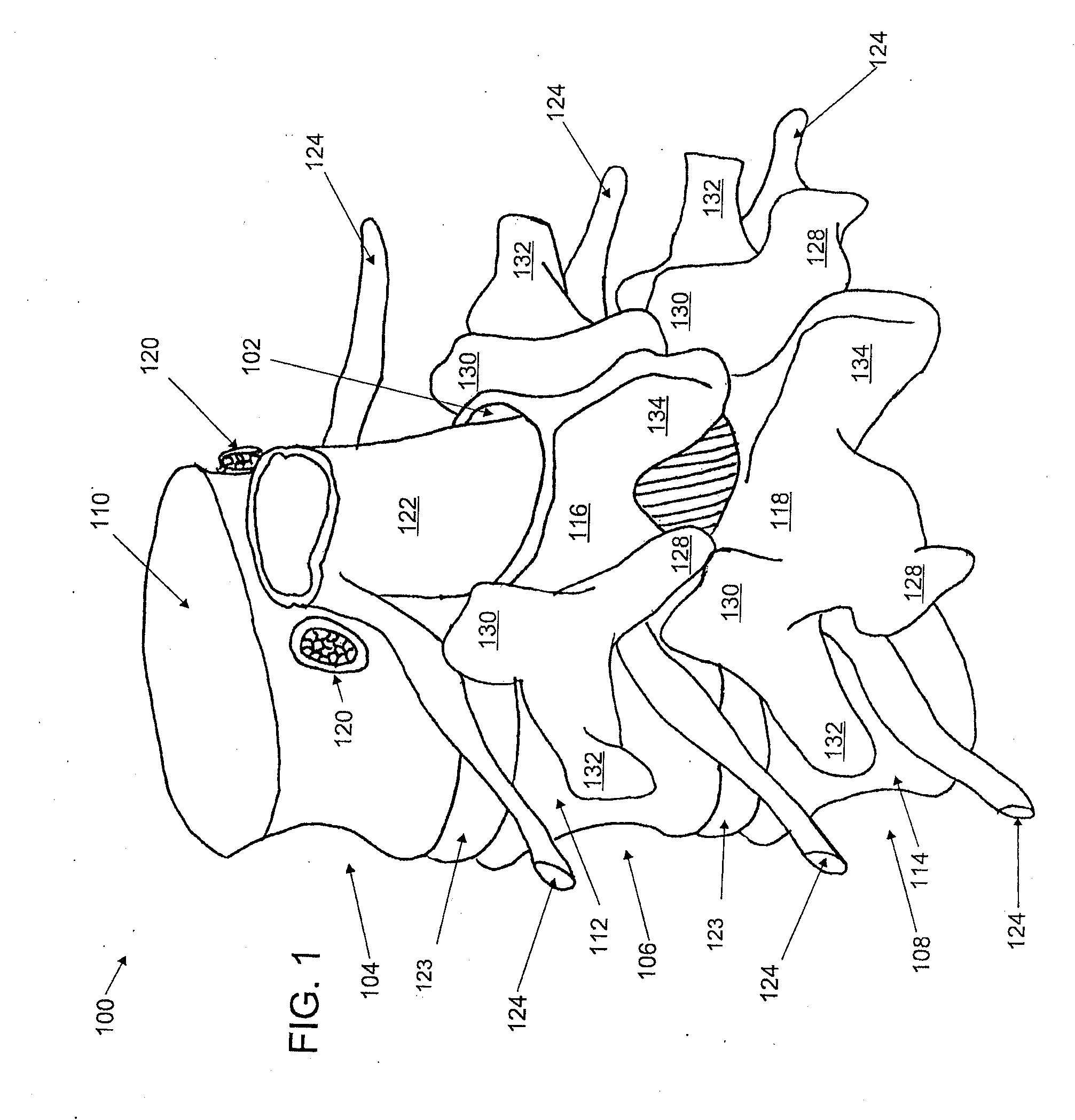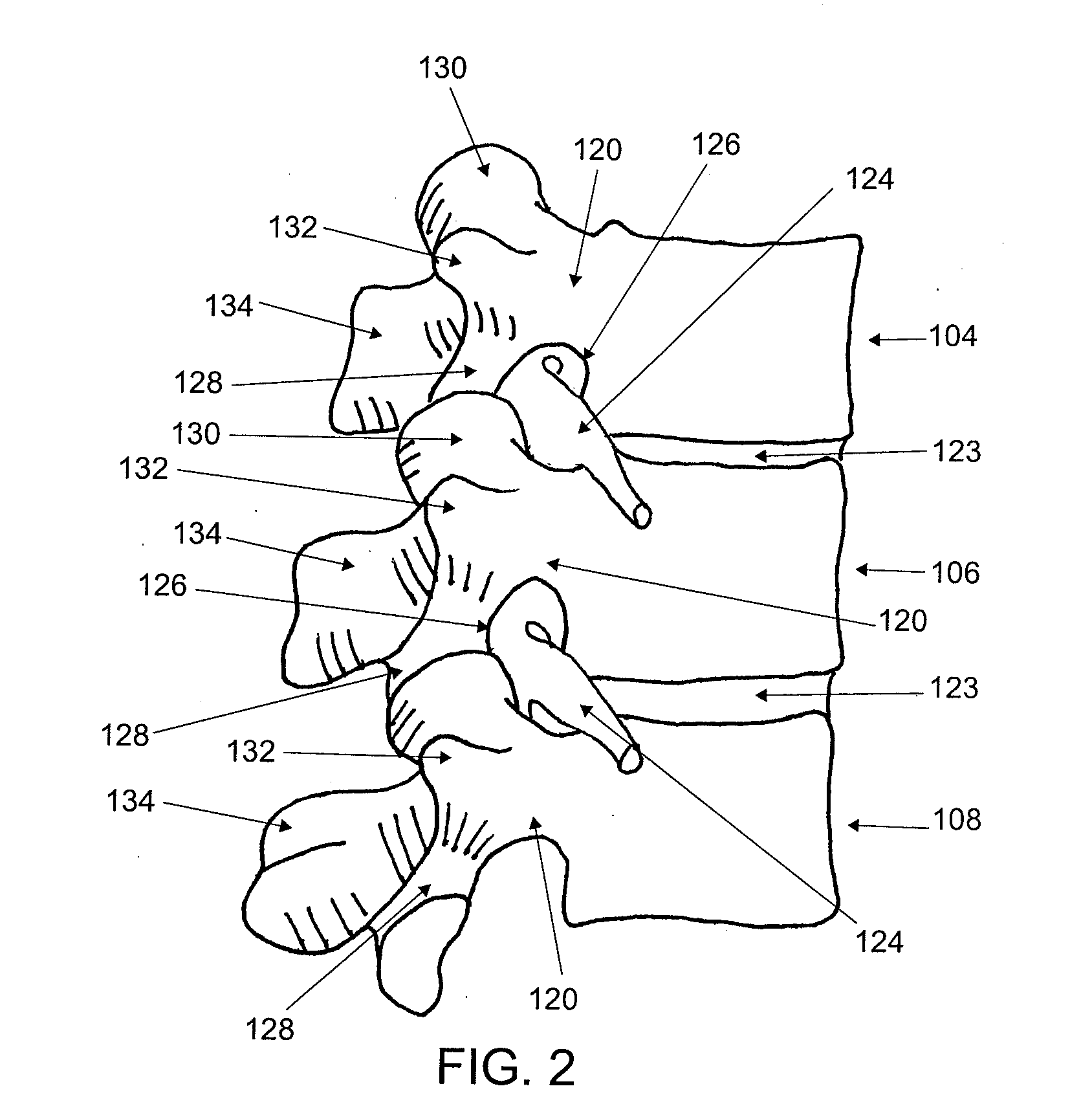Devices and methods for arched roof cutters
- Summary
- Abstract
- Description
- Claims
- Application Information
AI Technical Summary
Benefits of technology
Problems solved by technology
Method used
Image
Examples
Embodiment Construction
[0072]FIGS. 1 and 2 are schematic views of a lumbar region of a spine 100. The vertebral canal 102 is formed by a plurality of vertebrae 104, 106, and 108, which comprise vertebral bodies 110, 112 and 114 anteriorly and vertebral arches 116 and 118 posteriorly. The vertebral arch and adjacent connective tissue of the superior vertebra 104 has been omitted in FIG. 1 to better illustrate the spinal cord 122 within the vertebral canal 102. Spinal nerves 124 branch from the spinal cord 122 bilaterally and exit the vertebral canal 102 through intervertebral foramina 126 (seen best in FIGS. 2 and 3) that are formed by the adjacent vertebra 104, 106 and 108. The intervertebral foramina 126 are typically bordered by the inferior surface of the pedicles 120, a portion of the vertebral bodies 104, 106 and 108, the inferior articular processes 128, and the superior articular processes 130 of the adjacent vertebrae. Also projecting from the vertebral arches 116 and 118 are the transverse proces...
PUM
 Login to View More
Login to View More Abstract
Description
Claims
Application Information
 Login to View More
Login to View More - R&D
- Intellectual Property
- Life Sciences
- Materials
- Tech Scout
- Unparalleled Data Quality
- Higher Quality Content
- 60% Fewer Hallucinations
Browse by: Latest US Patents, China's latest patents, Technical Efficacy Thesaurus, Application Domain, Technology Topic, Popular Technical Reports.
© 2025 PatSnap. All rights reserved.Legal|Privacy policy|Modern Slavery Act Transparency Statement|Sitemap|About US| Contact US: help@patsnap.com



